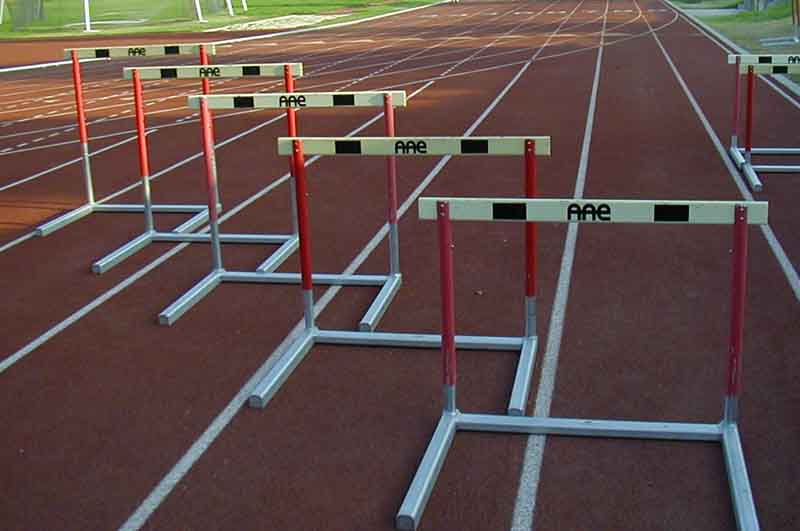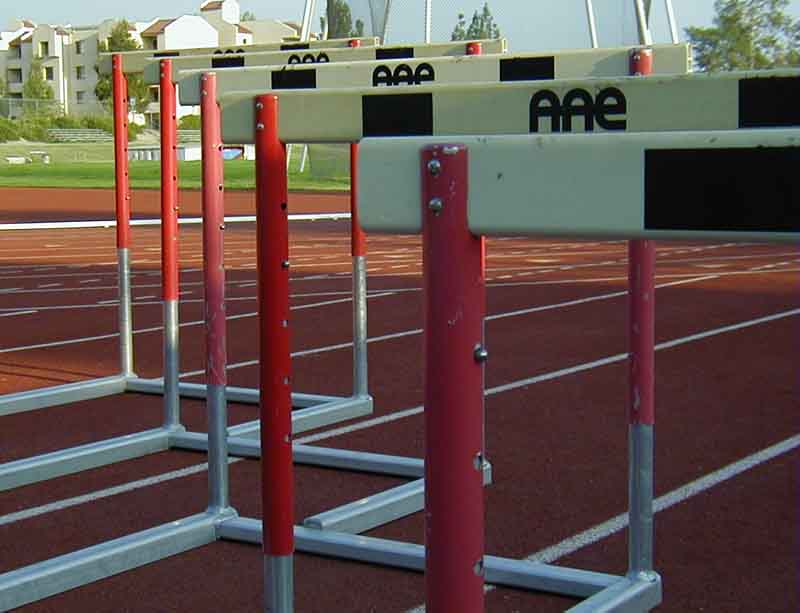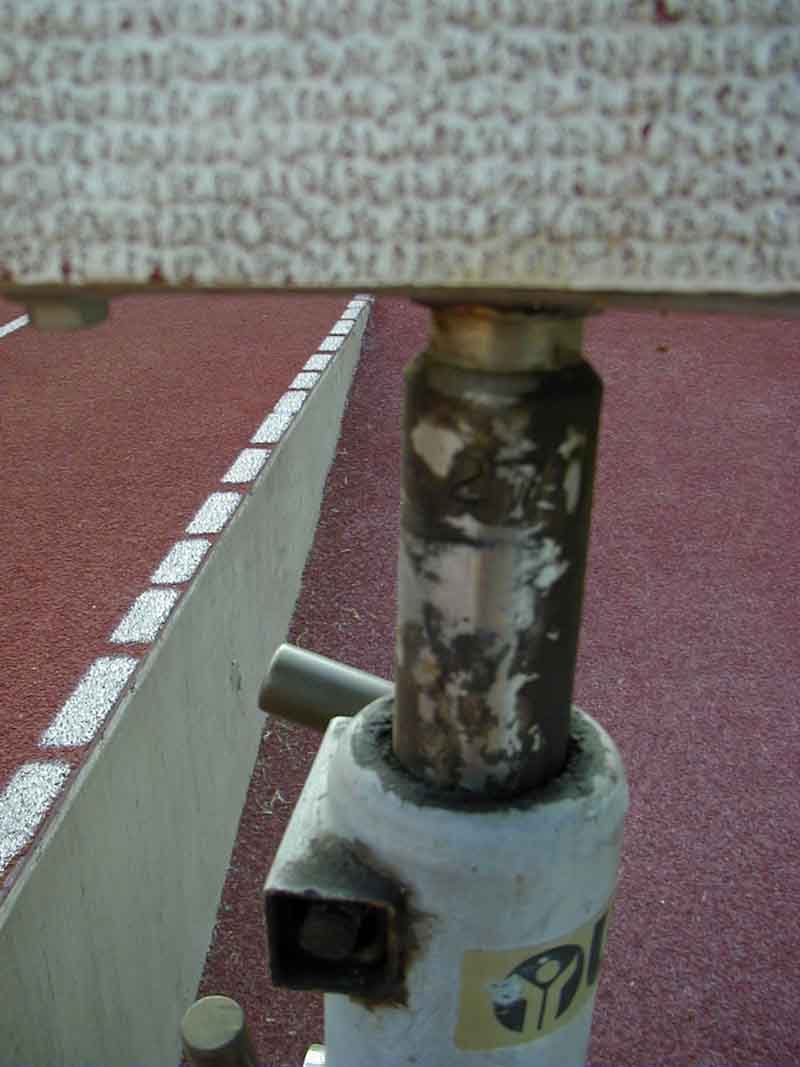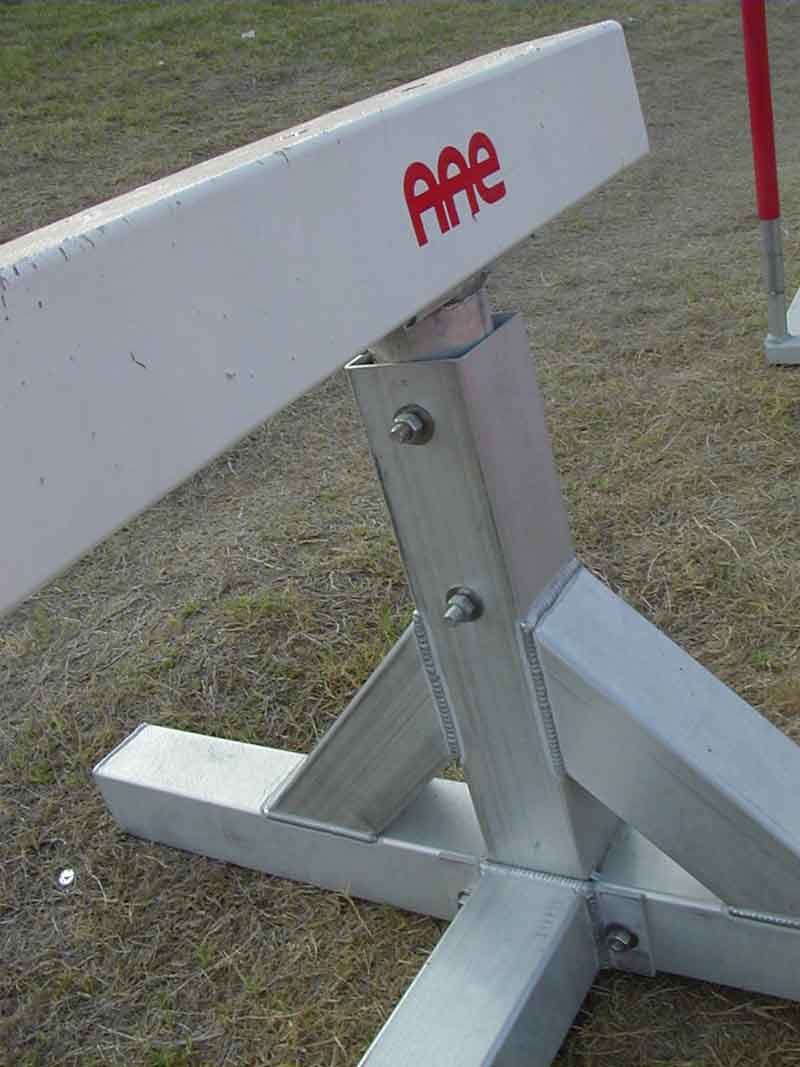

 |
 |
Hurdle # |
1 |
2 |
3 |
4 |
5 |
6 |
7 |
8 |
9 |
10 |
Finish |
From Start |
13.72 |
22.86 |
32.00 |
41.14 |
50.28 |
59.42 |
68.56 |
77.70 |
86.84 |
95.98 |
110 |
Hurdle # |
10 |
9 |
8 |
7 |
6 |
5 |
4 |
3 |
2 |
1 |
Start |
From Finish |
14.02 |
23.16 |
32.30 |
41.44 |
50.58 |
59.72 |
68.86 |
78.00 |
87.14 |
96.28 |
110 |
Hurdle # |
1 |
2 |
3 |
4 |
5 |
6 |
7 |
8 |
9 |
10 |
Finish |
From Start |
13.0 |
21.5 |
30.0 |
38.5 |
47.0 |
55.5 |
64.0 |
72.5 |
81.0 |
89.5 |
100 |
Hurdle # |
10 |
9 |
8 |
7 |
6 |
5 |
4 |
3 |
2 |
1 |
Start |
From Finish |
10.5 |
19.0 |
27.5 |
36.0 |
44.5 |
53.0 |
61.5 |
70.0 |
78.5 |
87.0 |
100 |
 |
 |
There is a calibration line on this variety--this one (currently at 30") is even marked for 27" which is only used for international Masters 70+ |
This one (currently at 30") needs to remove both bolts which act as pins. Both helpers need to lift to the next hole before pins are replaced. |
| Hurdle # | Distance | Adjustment |
| H1 | 12 | W1 -1.0m |
| H2 | 20 | W2 -1.5m |
| H3 | 28 | W3 -2m |
| H4 | 36 | W4 -2.5m |
| H5 | 44 | W5 -3.0m |
| H6 | 52 | W6 -3.5m |
| H7 | 60 | W7 -4.0m |
| H8 | 68 | W7 +4.0m |
| H9 | 76 | W8 +3.5m |
| H10 | 84 | W9 +3.0m |
| Hurdle # | Distance | Adjustment |
| H1 | 12 | W3 +2.0m |
| H2 | 19 | W4 +0.5m |
| H3 | 26 | W5 -1.0m |
| H4 | 33 | W6 -2.5m |
| H5 | 40 | W7 -4.0m |
| H6 | 47 | W7 +3.0m |
| H7 | 54 | W8 +1.5m |
| H8 | 61 | =W9 |
| Hurdle # | Distance | Adjustment |
| H1 | 12 | W3 +2.0m |
| H2 | 19.5 | W4 +1.0m |
| H3 | 27 | =W5 |
| H4 | 34.5 | W6 -1.0m |
| H5 | 42 | W7 -2.0m |
| H6 | 49.5 | W8 -3.0m |
| H7 | 57 | W9 -4.0m |
| H8 | 64.5 | W9+3.5m |
| Hurdle # | Distance | Adjustment |
| H1 | 13 | =W1 |
| H2 | 21 | W2 -0.5m |
| H3 | 29 | W3 -1m |
| H4 | 37 | W4 -1.5m |
| H5 | 45 | W5 -2.0m |
| H6 | 53 | W6 -2.5m |
| H7 | 61 | W7 -3.0m |
| H8 | 69 | W8 -3.5m |
| H9 | 77 | W9 -4.0m |
| H10 | 85 | W9 +4.0m |